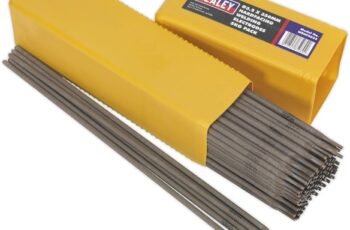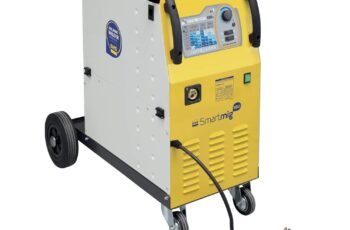Ad Blocker Detected
Our website is made possible by displaying online advertisements to our visitors. Please consider supporting us by disabling your ad blocker.
Taking care of your MIG welding machine isn’t just a good practice—it’s essential for its longevity. By establishing a consistent maintenance routine, you’re not only ensuring optimal performance but also saving yourself from costly repairs down the road. Whether it’s daily visual checks or quarterly inspections, each step plays a crucial role in keeping your machine running smoothly. Curious about what else you can do to extend your welder’s life?
Daily Maintenance Routine
Before you power up your MIG welding machine, it’s crucial to perform a daily maintenance routine to ensure it runs smoothly and safely.
Start with an initial visual check for cracks, tangled cables, or loose connections. This helps prevent operational risks.
Assess consumables like the nozzle, contact tip, and liner for any wear or slag buildup. Replace them if needed to maintain arc consistency.
Verify electrical connections are secure; loose wires can compromise functionality. You should also clean the exterior to remove dust, dirt, and metal particles that can accumulate during use.
Evaluate the wire feed system by checking roller alignment and wire tension to ensure steady material flow.
Tighten weld terminals and the ground clamp, and repair any frayed wires immediately.
A quick exterior wipe-down removes dust and debris, protecting the machine’s internal components.
Weekly and Monthly Checks
When maintaining your MIG welding machine, weekly and monthly checks are essential to ensure optimal performance and longevity.
Start by blowing out machine internals to clear spatter and debris. Clean MIG gun tips and inspect wire feed rollers for any buildup that could cause misfeeds. Keep your wire drums clean and store them with a plastic cover to prevent moisture issues. Regular inspections are key to identifying potential issues early, which aligns with the principles of a preventive maintenance program.
Check water and gas hoses for leaks and ensure weld cables are free from damage. Monitor coolant levels, inspect hoses, and flush systems if contamination is detected.
Conduct monthly pressure tests on gas lines and ensure flashback arrestors are clean. Regularly clean ground clamps and verify liner compatibility to maintain smooth operation.
Quarterly Inspection and Replacement
As you move from weekly and monthly checks to more comprehensive quarterly inspections, it’s important to focus on detailed evaluations and necessary replacements to keep your MIG welding machine in peak condition.
Start by conducting continuity tests on electrical circuits to spot any wiring issues. Inspect internal connections for corrosion and oxidation, and replace damaged power cords. Check the ground clamp’s integrity and test control panel responses.
For the gas supply, inspect hoses, replace outdated pressure regulators, and test for leaks. Swap consumables like gas nozzles regularly. Ensure cable size is appropriate for amperage per manufacturer specs to prevent overheating and damage to the equipment.
Lubricate drive mechanisms, replace air filters, and clean wire feed liners. Ensure your safety checks include verifying the condition of the ground clamp and testing fire extinguisher accessibility.
Document your findings for accountability.
Bi-Annual Overhaul Procedures
Although regular maintenance is crucial, a bi-annual overhaul of your MIG welding machine ensures long-term reliability and performance.
Start with a comprehensive component inspection: check the power supply for electrical issues, examine the wire feeder for alignment, and assess the weld head for gas flow and nozzle integrity. Regular inspection of components like the torch and cooling system prevents overheating issues.
Analyze the coolant system’s purity, pump efficiency, and hose condition. Test the power and refractory regulators for gas pressure accuracy.
Replace torch liners every 200–500 welds, swap damaged nozzles, and exchange contact tips after heavy use.
Calibrate drive rollers and service gas diffusers. Inspect ground clamps and hoses for wear, clean contact points, service cable joints, and ensure control circuit continuity.
Finally, validate power output, calibrate gas regulators, verify wire feed speed, and test arc stability.
Proper Storage Practices
Proper storage practices for your MIG welding machine and its accessories are vital for maintaining their performance and longevity. Start by using locked cabinets or tool chests to secure your equipment, ensuring they’re stored above ground to avoid moisture damage. Keep welding gear at least 35 feet away from flammable materials and label shelves for easy access. Store electrical components in warm, dry places, using desiccants to prevent condensation. Gas cylinders should be stored standing upright and secure with a chain or bracket to ensure stability and prevent accidents. Always disconnect equipment for long-term storage and ground machines properly. For gas cylinders, secure them upright with chains and ensure they’re ventilated and away from fuels. Coil cables neatly, use gun hangers, and store consumables dry and organized. These steps will help keep your welding gear in top shape.
Torch Care and Maintenance
Maintaining your MIG torch is critical for ensuring optimal performance and extending its lifespan.
Replace contact tips every 10–15 hours and nozzles every 25–30 hours to keep the arc quality intact. Always be on the lookout for excessive wear like enlarged holes or eroded nozzles and replace them promptly.
After each welding session, clean the contact area with a scraper or pliers to remove slag and debris. Occasionally wipe the wire feed liner to clear metallic shavings.
Remember to check gas flow paths regularly to prevent blockages. If moisture exposure occurs, dry your torch immediately to prevent corrosion.
Avoid overtightening consumables as it may damage threads. Keep your torch in top shape by following these simple steps.
Handling and Securing Cables
When you handle and secure cables correctly, you ensure the safety and efficiency of your MIG welding operations.
Keep the gun and cable aligned straight during welding to prevent twisting. Allow them to cool flat on a surface afterward to avoid kinks. Use cable trays or racks to organize routing and reduce tripping hazards.
Never drag your welding machine by its cable, as it can cause stretching or disconnection. Implement conduits or sleeves to protect against abrasion, and verify all connectors are tightly fastened to prevent arcing.
Inspect cable insulation for cracks or fraying each time you use them. Store cables neatly on spools or in dedicated units, and use clamps to secure bends at recommended radii.
Keeping the Gas System in Check
Ensuring your MIG welding machine’s gas system is in top condition is essential for reliable performance and safety. Start by purging gas lines daily after shutdown to clear residual gas and moisture.
Check gas flow rates and pressure weekly with a flowmeter or gauge to maintain shielding consistency. Monthly, use compressed air to remove debris from lines, focusing on the diffuser and nozzle.
Inspect hoses daily for leaks, cracks, or corrosion, and tighten fittings after every three shifts. Replace hoses showing kinks or fraying and check O-rings for degradation.
Clean nozzles daily, replace them every 25-30 hours, and inspect diffuser O-rings monthly. Test for leaks daily using soapy water and conduct monthly pressure tests.
Conclusion
By sticking to a regular maintenance routine, you’ll extend the life of your MIG welding machine and ensure it performs at its best. Daily checks help catch small issues early, while weekly and monthly routines keep everything running smoothly. Don’t forget those quarterly and bi-annual inspections to prevent bigger problems. Proper storage and care for your torch, cables, and gas system are crucial. With these steps, you’ll keep your machine in top shape for years to come.



